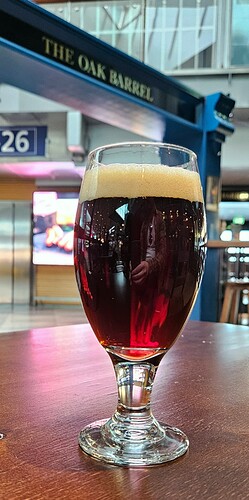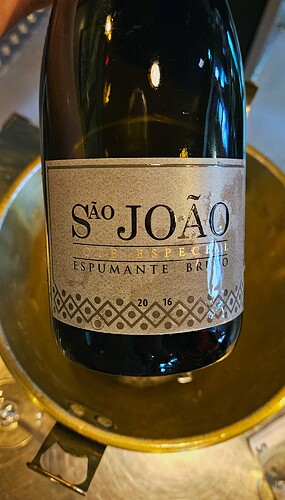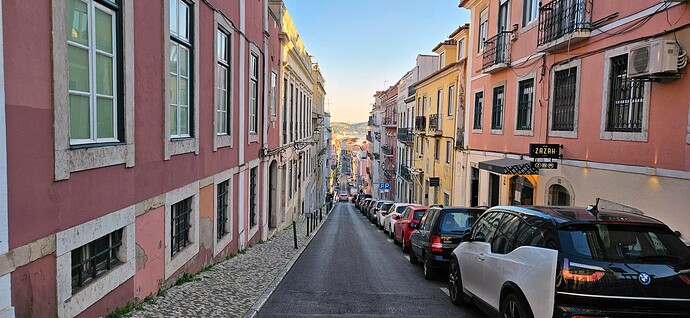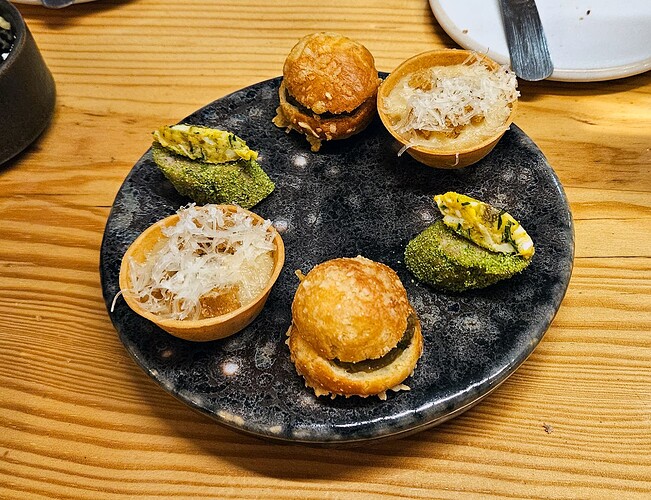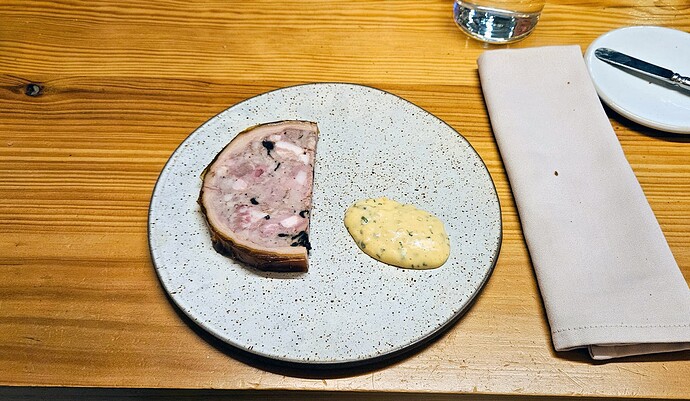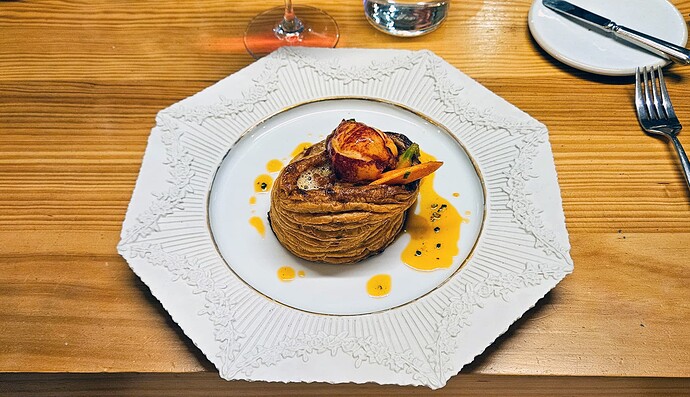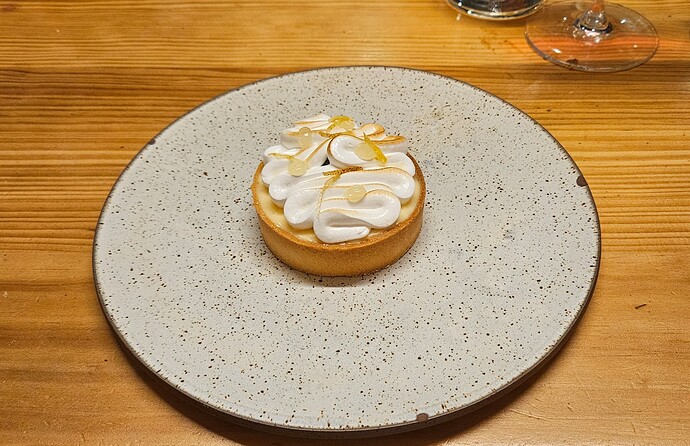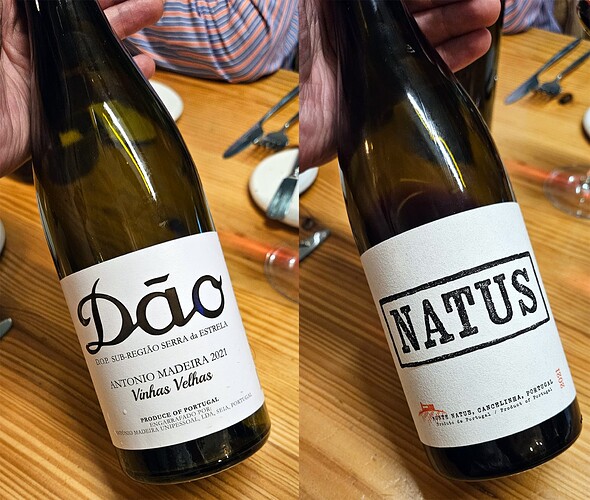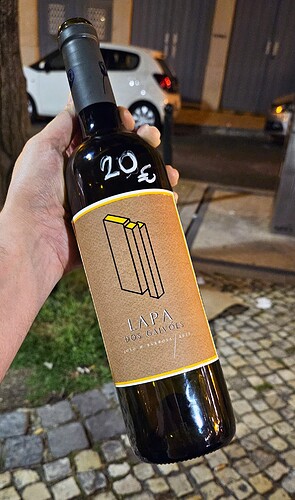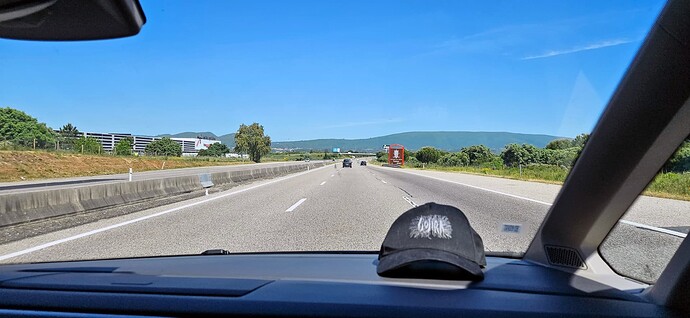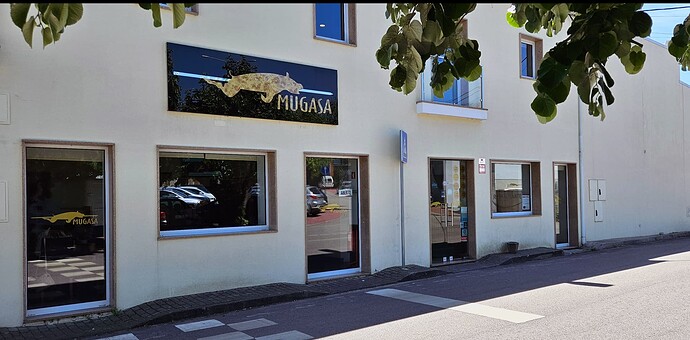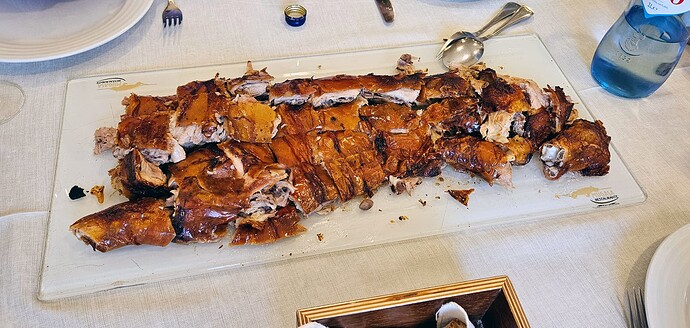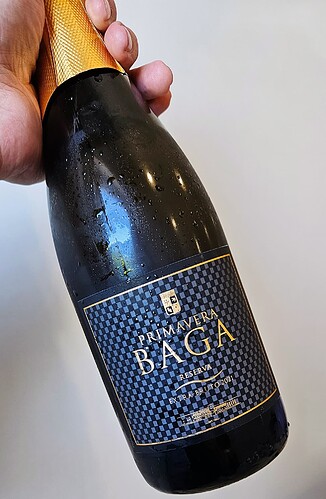I returned from a week-long trip to Portugal a day or two ago, so I guess it’s time for yet another wine-infused travelogue!
(Here are links to my previous travelogues on Georgia, Madeira and Tuscany.)
This trip wasn’t a vacation trip per se; some years ago me and my wino buddy decided that we needed to go somewhere and just visit as much wineries as we can - nothing else. After all, our spouses aren’t that much into wine, so going somewhere and doing nothing but winery visits isn’t really their idea of having fun. Unlike for us!
Our plans started to take shape more than two years ago when we started our first discussions. Our first plan was to go to Georgia, because my friend hadn’t been there, I wanted to return there and we both loved their idiosyncratic wines. However, after Russia going completely berserk and things subsequently going pretty much haywire in those parts of the world, we decided to shift our focus elsewhere.
One vinous pow-wow later we decided that our plan B would be Portugal: this buddy of mine had never been there before and I wanted to go back there badly, so the decision was pretty easy. We finally made the decision on last spring that in a year’s time we really should make our long-planned excursion become reality. Over the course of last year, one friend of ours (over)heard our plans and told he’d be very interested to join - so we welcomed him in our group. Then another friend did the same thing. As we thought that a van could easily accommodate the four of us and our baggage (plus four people sharing the rent of a car for a week is always cheaper per person than three people sharing), our four-person touring crew had taken its final form!
I also contacted our fellow forumite @Tomas_Costa a few months before our departure for any tips and suggestions - and boy did we get some! There will be many instances over the course of this travelogue where I will mention Tomás’s name over and over again, so hopefully you will get some idea how much help we got from him. I am enormously grateful for all the effort he put into making our trip so awesome - thanks, Tomás!
Day 1
As is customary in these circles, our rendezvous was at the Oak Barrel pub in Helsinki-Vantaa airport.
We flew from still-somewhat-snowy Helsinki to warm and sunny Lisbon, arriving slightly ahead of schedule, around 3 in the afternoon. After we had settled into our hotel rooms and restocked some supplies from the nearby grocery store, we left to check out the somewhat-nearby wine shop, Garrafeira Estado d’Alma, which Tomás had highlighted as one of the top spots to make any purchases while in Lisbon. Sure enough, they had an excellent assortment of all kinds of wines (and spirits) and I was mightily impressed by their selection only after a quick browse! As we had just arrived to Portugal, we told that we weren’t planning to buy anything now, but promised we’d definitely be back by the end of the week.
At this point we had an hour before our dinner, but as the restaurant was still a moderate walk away, we thought that we should start walking in the general direction of the restaurant and grab a beer or a wine somewhere along the way. Sure enough, an opportunity for refreshments came pretty quickly in a form of a small corner bar. We ordered a bottle of fizz to celebrate our escape from the Finnish winter that seemed to never end.
- 2016 Caves São João Bairrada Espumante Bruto Lote Especial - Portugal, Beiras, Bairrada (21.4.2024)
Made from a blend of Bical, Maria Gomes (aka. Fernão Pires), Arinto and Chardonnay. Fermented in stainless steel tanks and aged on the lees until the spring. Refermented in bottles and aged sur lattes for several years. 12,5% alcohol.
Slightly evolved lemon-yellow color. The nose feels vibrant, ripe and fruity with slightly evolved aromas of peach, some honeyed tones, a little bit of slivered almond, light nuances of fresh red apple and a fragrant hint of floral character. The wine feels ripe, broad and slightly matured on the palate with a medium body with layered flavors of evolved yellow fruits, some nutty notes of slivered almond, a little bit of fresh and crunchy white fruits, a mineral hint of chalk dust and a touch of spice. The mousse feels very fine and creamy, while the acidity feels moderately high. The finish is ripe, fresh and dry-ish with a rather long aftertaste of peach and crunchy red apple, some juicy apricot tones, a little bit of fragrant floral character, a hint of spice and a mineral touch of wet rocks.
A very nice, fresh and balanced fizz that shows a great combination of fruit and structure. You can see the wine is starting to show a tiny bit of evolved complexity, but the overall feel is still surprisingly fresh and youthful for its age. There are no toasty notes - and probably the wine won't develop any, even with some age - but I'm sure this wine will not only keep, but evolve for a good handful of years more. Worth the price at 28€ in a bar and superb value at its retail price of 10-12€.
(89 points)
After we had finished the bubbly, we continued toward the restaurant. This is how the views were while we were traveling from the bar to the restaurant:
Anyways, we went to dine at restaurant Essencial. One member of our group had taken the role of a restaurant scout and thought this restaurant seemed like a very promising place, so he had booked us a table there a little while before our trip. Lo and behold, the restaurant really did turn out to be as great a place as recommendations and internet had indicated! They had absolutely delicious dishes, a well-curated and interesting wine list and top-notch service. Even a week later after our tour, us having eaten in so many different places all around Portugal, this very first restaurant managed to remain as the group favorite! Truly a place I can heartily recommend.
Small hors d’oeuvres
Leitão, foie gras & molho tártaro
Lobster with a sweetbread vol-au-vent
Normally I don’t go for desserts, but ye gods this moist lemon pastry was out of this world!
And here are the wines (we also had a glass of Borges Madeira with the dessert, but I didn’t take any notes because I had tasted the same - excellent - wine so little while ago).
- 2021 António Madeira Dão Vinhas Velhas - Portugal, Beiras, Dão (21.4.2024)
Made with biodynamically farmed fruit sourced from old (50 to 120 yo) interplanted vineyards on the granitic soils of Serra da Estrela. The field blend includes Arinto, Bical, Cerceal Branco, Encruzado, Fernão Pires, Siria and smaller amounts of other local white varieties. Fermented spontaneously, aged for a year in old French and Austrian oak casks, then blended and aged for another year in stainless steel tanks. Bottled unfined and unfiltered. 12% alcohol.
Hazy yellow-green color. The nose feels slightly reductive at first with vague smoky notes of struck match, but these nuances blow off quite quickly revealing aromas of ripe Golden Delicious apple, some nectarine tones, a little bit of stony minerality, light creamy oak nuances, a hint of honeydew melon and a fragrant touch of white flowers. The wine feels enjoyably crisp yet quite broad and textural on the palate with a medium body and layered flavors of wet rocks and incisive steely minerality, some fresh Golden Delicious apple tones, a little bit of smoky reduction, light salty brackish nuances, a hint of nectarine and a touch of creamy oak. The high acidity lends great sense of freshness and balance to the wine. The finish is dry and crisp yet still pretty richly-rextured with a long, somewhat concentrated aftertaste of fresh Golden Delicious apple, some saline mineral tones, a little bit of crunchy quince, light lifted nuances of sweet VA, a mineral hint of wet rocks and a touch of leesy creaminess along with a subtle kiss of old oak.
A sophisticated, fine-tuned and balanced Dão white that nods deeply in the direction of Burgundy while retaining a distinctive, slightly more yellow-toned Dão identity. I can imagine it's the combination of the more sunny climate of Portugal and the very old vines that make the wine feel so rich and textural on the palate, but the bright minerality and fresh acidity (no doubt thanks to the granitic soils of Dão) help to keep the wine wonderfully fresh, structured and precise despite its sense of concentration. The wine is still super youthful and a bit nervous, so I'm positive that another 5-10 years of aging will make the wine lose its reductive qualities and develop some wonderful tertiary complexity. However, with a little bit of aeration this wine is a smashing example of contemporary, terroir-oriented Portuguese winemaking. A pretty good purchase at 64€ in a restaurant and great value at its retail price of approx. 30-35€.
(92 points) - 2021 Natus Tinto - Portugal, Alentejano, Alentejo (21.4.2024)
A blend of biodynamically farmed local red varieties - mainly Trincadeira and Castelão - from the estate-owned bush vines grown on poor schist soils. The grapes are foot-trodden, fermented spontaneously and pressed only after a few days of fermentation into uncoated 19th-century clay talhas to finish the fermentation. Aged for 12 months in centenary Portuguese oak and chestnut toneis and used 300-liter French oak casks. Bottled unfined and unfiltered. 13% alcohol, 0,5 g/l residual sugar, 5,7 g/l acidity and pH 3,57. Total production 3707 bottles and 106 magnums.
Translucent cherry-red color with a faint dried-blood hue. The rather fruit-forward nose feels sweet, fresh and fragrant with characterful aromas of crunchy dark berries and some strawberries, a little bit of brambly raspberry, light floral nuances of violets, sweeter hints of ripe boysenberries and bilberries and a reductive touch of smoke. The wine feels dry, youthful and juicy on the palate with a medium body and bright flavors of sweet black raspberries and ripe cherries, some fresh plummy tones, a little bit of licorice root, light stony mineral notes of and a hint of sour cherry bitterness. The structure relies more on the high acidity than on the supple, gentle tannins. The finish is long, dry and slightly grippy with a bright aftertaste of brambly black raspberries, some sweeter notes of boysenberries, a little bit of tart red plum, light sour cherry tones and a hint of gravelly minerality.
A tasty, sophisticated and quite delicate Alentejano red - a polar opposite to the big, ripe and burly reds the region is widely known for. Even if the wine's name might conjure images of something very natty, the wine is wonderfully pure-fruited and fresh with no funky tones whatsoever. A lovely and delicious food wine - it's quite hard to assess if this kind of light and airy wine will continue evolve and improve with further aging, but for immediate consumption this was spot on. Priced according to its quality at 64€ in a restaurant.
(90 points)
Finally, before leaving the restaurant, we asked the sommelier if there were any wine bars nearby where we could have one more glass (or a bottle) before retiring to sleep. He recommended us Black Sheep, a fun and positively un-serious wine bar that was only a stone’s throw away. I would’ve been happy to grab a fresh white or a lighter red, but since a few members of our group wanted something a bit bigger and bolder (understandable, right after a Madeira and a coffee), we decided to go with a bottle of Alentejano red instead.
- 2015 João M Barbosa Lapa dos Gaivões - Portugal, Alentejano, Vinho Regional Alentejano (21.4.2024)
A blend of Touriga Nacional, Trincadeira, Aragonez and Alicante Bouschet. Macerated with the skins for 8 days. 14% alcohol
Rather deep and moderately opaque plummy color with a slightly evolved maroon hue. The nose feels somewhat evolved and slightly pruney with aromas of wizened dark fruits, some minty green tones, a little bit of game, light raisiny tones, a hint of cigar, a touch of ripe blackberry and a sweet, lifted whiff of balsamic VA. The wine feels savory, open-knit and somewhat evolved on the palate with a medium body and layered flavors of tobacco and sweet raisiny fruit, some sour cherry bitterness, light minty tones, a little bit of prunes and a hint of game. The structure relies more on the ample and firm tannins that slowly pile up on the gums rather than on the somewhat modest medium tannins. The finish is rich, long and moderately grippy with a pruney aftertaste of dark raisiny fruit, some extracted bitter tones, a little bit of minty greenness, light balsamic nuances, a hint of game and a touch of tobacco.
A pleasant but also a bit heavy and surprisingly evolved Alentejano red that feels like it is at its peak - which surprised me a bit, since I've understood this 2015 is a very recent release of this label! At least I haven't seen any more recent vintages available. I don't know if this was a representative bottle or if it had been kept in sub-optimal conditions, but it seemed like more evolved than I anticipated and I doubt it will improve with further aging. It was, however, an enjoyable drop on its own. Worth the price at 20€ in a wine bar.
(88 points)
Posted from CellarTracker
After having eaten and drunk really well, we returned to our hotel, ready for our first winery visit!
